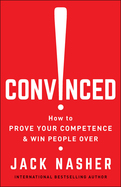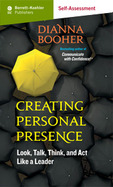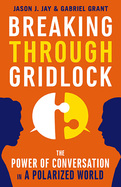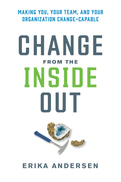2018
Nasher offers the example of Joshua Bell, possibly the world's most famous violinist. In January 2007, at rush hour, he stepped into a Washington, DC, subway station, dressed like any street busker, and began to play a $4,000,000 Stradivarius. It was part of an experiment staged by a journalist of the Washington Post, who expected Bell's skill alone to attract an immense, awed crowd. But Bell was generally ignored, and when he stopped, nobody applauded. He made $34.17.
The good news is that you don't have to accept obscurity: you can positively affect others' perception of your talent. Whether you're looking for work, giving an important presentation, seeking clients or customers for your business, or vying for a promotion, Nasher explains how to use techniques such as expectation management, verbal and nonverbal communication, the Halo Effect, competence framing, and the power of nonconformity to gain control of how others perceive you.
Competence is the most highly valued professional trait. But it's not enough to be competent, you have to convey your competence. With Nasher's help you can showcase your expertise, receive the recognition you deserve, and achieve lasting success.

Product: Online streamed application (not downloaded), limited one-year subscription (5 tests or 12 months, whichever comes first), password controlled
Duration: 27 questions, takes 10-15 minutes to answer
Results: Visual funnel graphic with four layers of Personal Presence layers; includes interpretation from author, growth path, and frequently asked questions, print option
BASED ON THE BOOK: It may be difficult to define, but we all know presence when we encounter it. Someone walks into the room and people step aside. Heads turn. When those with presence speak, people listen. When they ask, people answer. When they lead, people follow. People with presence look confident and comfortable, speak persuasively, think clearly even under pressure, and act with intention and integrity.
Presence is not something you have to be born with. It's not about status symbols or position. It's not about who you are but about how you are. And it's something anyone can learn. Award-winning speaker and consultant Dianna Booher provides scores of practical tips on the physical qualities, communication techniques, thought processes, and attitudes that underlie powerful personal presence. This comprehen- sive guide will enable readers to become compelling leaders no matter what their current position.
Booher shows how to master the dozens of small and significant things that work together to convey personal presence. She details how dress, body language, manners, and even your surroundings enhance credibility and build rapport. You'll learn to use voice and language to demonstrate competence and deliver clear and memorable messages, think strategically and organize ideas coherently, and relate to others in ways that convey genuine interest, respect, good humor, and reliability.
Personal presence can help you get a date, a mate, a job, or a sale. It can help you lead a meeting, a movement, an organization, or a nation. Presence can take you wherever you want to go. With Dianna Booher's expert, entertaining advice, you can have the same kind of influence as the most successful CEOs, celebrities, and civic leaders.
PURCHASER AND USER NOTE: If you are an individual consumer newly purchasing the assessment, go directly to the shopping cart by clicking the "add to cart" icon to your left. If you are a member of an organization that has purchased a bulk order, or if you already bought the assessment in the last 12 months and are retaking it now using the original Access Key to retake the assessment please log in here. New registrants: Please enter your "Access Key" into the input field to enter the self-assessment for the first time. A note to frequent purchasers: You cannot use your current bkconnection.com password for this product; you must create and use a new password. For any questions, please contact the support desk at 800-929-2929 (8 am-9 pm Eastern U.S. time, Monday through Friday), or [email protected]. Thank you.
These conversations are vital, but too often get stuck. They become contentious or we avoid them because we fear they might. What if, in these difficult conversations, we could stay true to ourselves while enriching relationships and creating powerful pathways forward? What if our divergent values provided healthy fuel for dialogue and innovation instead of gridlock and polarization? Jason Jay and Gabriel Grant invite us into a spirit of serious play, laughing at ourselves while moving from self-reflection to action. Using enlightening exercises and rich examples, Breaking through Gridlock helps us become aware of the role we unwittingly play in getting conversations stuck. It empowers us to share what really matters – with anyone, anywhere – so that together we can create positive change in our families, organizations, communities, and society.
2008
Polls consistently show that most Americans are progressives at heart. By margins of at least two to one, we favor affordable healthcare for all, even if it means raising taxes; want federal action to combat global warming; support stricter gun control; don’t want Roe vs. Wade overturned; and the list goes on. So why is it so hard for progressive candidates to win elections?
Because, says Bernie Horn, most progressives don’t know how to explain their ideas in ways that resonate with “persuadables”—the significant slice of the electorate who don’t instantly identify as Democrats or Republicans. These are the voters who swing elections. There’s been a lot of theoretical discussion about framing lately, but Framing the Future isn’t theory—the concepts outlined have been used successfully by progressive candidates across the nation, even in such conservative bastions as Montana, Arizona, and Florida.
Drawing on rigorous polling data and his own experience as a veteran political consultant, Horn explains how persuadable voters think about issues and make political decisions and why, as a result, the usual progressive approaches are practically designed to fail with them. He offers a crash course in the nuts and bolts of framing and shows how to use three bedrock American values—freedom, opportunity, and security—to frame progressive positions in a way that creates a consistent, unified political vision that will appeal to persuadable voters. He even offers advice on specific words and phrases to use when talking about a variety of issues and ideas.
Erika Andersen says avoiding change has been a historical imperative. In this book, she shows how we can overcome that reluctance and get good at making necessary change. Using a fictional story about a jewelry business changing generational hands, Andersen lays out a five-step model for addressing both this human side of change and its practical aspects:
Step 1: Clarify the change and why it's needed—Get clear on what the change is and the benefits it will bring.
Step 2: Envision the future state—Build a shared picture of the post-change future.
Step 3: Build the change—Bring together a change team, engage key stakeholders, and plan the change.
Step 4: Lead the transition—Build a transition plan that supports the human side of the change, then engage the whole organization in making the change.
Step 5: Keep the change going—Work to make your organization permanently more change-capable.
With opportunities to self-reflect and try out the ideas and approaches throughout, this book is a practical guide to thriving in this era of nonstop change.
2010
Shows how we can join the conversation online and share our stories to help make the world a better place.
- Shows how both activists and the casually progressive can leverage the power of social networks for social change
- Helps readers maintain credibility, establish new connections, deal with common fears, and have a good time
- Authoritative but aggressively non-technical-like talking to a real person with a great sense of humor who really knows her stuff
Social networks can be so much more than a way to find your high school friends or learn what your favorite celebrity had for breakfast. They can be powerful tools for changing the world. With Share This! both regular folks of a progressive bent and committed activists can learn how to go beyond swapping movie reviews and vacation photos (not that there's anything wrong with that).
At the moment the same kinds of people who dominate the dialog off-line are dominating it online, and things will never change if that doesn't change. Progressives need to get on social networks and share their stories, join conversations, connect with others-and not just others exactly like themselves. It's vital to reach out across all those ethnic/gender/preference/class/age lines that exist even within the progressive camp. As Deanna Zandt puts it, "creating a just society is sort of like the evolution of the species-if you have a bunch of the same DNA mixing together the species mutates poorly and eventually dies off."
But there are definitely dos and don'ts. Zandt delves into exactly what people are and are not looking for in online exchanges. How to be a good guest. What to share. Why authenticity is more important than just about anything, including traditional notions of expertise or authority. She addresses some common fears, like worrying about giving too much about yourself away, blurring the lines between your professional and personal life, or getting buried under a steaming heap of information overload. And she offers detailed, nuts-and bolts "how to get started" advice for both individuals and organizations.
The Internet is upending hierarchies and freeing the flow of information in a way that makes the invention of the printing press seem like an historical footnote. Share This! shows how to take advantage of this unprecedented opportunity to make marginalized voices heard and support real, fundamental change-and, incidentally, have some fun doing it.
















